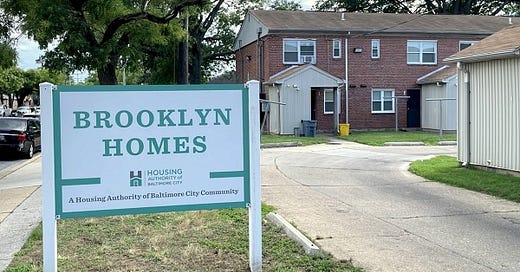FIRST-PERSON. Enough to Make a Hometown Reporter Cry: Why the Brooklyn Homes Tragedy Hurts More Than Other Mass Shootings I Have Reported On
The Baltimore Police Department's Hands are Covered In the Blood of the Two People Fatally Shot at Brooklyn Homes On July 2 and the BPD Bears Blame for the 28 Others Being Wounded.
The others I've covered -- mass shootings, that is, or at least three of them -- bore little resemblance to this one.
But other than the one I worked for The New York Times — when I became the first reporter to confirm the names of the five dead in a newsroom, one of them the long-ago friend and mentor who taught me to write a news lead at the college daily a lifetime ago — none hit me as hard as this one in my hometown of Baltimore.
In the others, the pattern became clear by the end of the days I got a call from an editor and jumped in my car immediately, with little to go on.
On a gorgeous autumn day in 2006, the Amish countryside resplendent, painted in shades of crimsons and burnt oranges and brilliant golds: Shooting in a schoolhouse. Can you go, a New York Times editor asks me? Shooting in an Aberdeen warehouse, a Washington Post editor asks me? Shooting in an Annapolis newsroom: Can you go, a New York Times editor asks.
Of course.
Few things rivet my attention or give me a greater sense of purpose than working on a big breaking story, and didn't Gay Talese write the truth?
"Most journalists are restless voyeurs who see the warts on the world, the imperfections in people and places.... Gloom is their game, the spectacle their passion, normality their nemesis."
The other mass shootings indeed followed familiar patterns: quick bursts of gunfire, seconds or a minute or two, questions about how shooters ever got guns legally with multiple red flags.
The one in Brooklyn Homes – a mass shooting by the federal definition of “four or more people are shot or killed in a single incident, not including the shooter” – differed in so many ways other than body counts of the dead.
The gunfire around 12:30 a.m. that awful Sunday, June 2, was not the typical blaze of seconds or a few minutes of shots from assault weapons, as in many mass shootings, but 10 full minutes of gunfire, and at least three gunmen firing into the throngs at five separate locations at Brooklyn Homes, spread across several blocks.
This was not a case of one deranged shooter who somehow purchased an assault weapon legally, but now 17 days later, the Baltimore police have nabbed exactly one suspect.
He’s a 17-year-old, with no run-ins with the law, a high school senior who lives with his mother near Brooklyn Homes, being held without bond on misdemeanor charges. They include three weapons possession charges, when police have seized no weapon as probable cause, and, in fact, police were nowhere in sight when gunfire tore through Brooklyn Homes early July 2 during an annual community celebration where more than 800 people crowded the streets.
Neither police nor prosecutors have alleged that the teen fired a weapon.
And prosecutors who allege weapons possession have presented no weapon as evidence against the youth.
Perhaps the Baltimore Police Department would have more actual suspects by now if officers had bothered to show up at Brooklyn Homes at any time during Brooklyn Day.
Richard J. Worley Jr., Baltimore’s acting police commissioner, expressed sorrow, remorse, anger and searing regret at City Hall Thursday night as he acknowledged monumental failings in policing that left the Brooklyn Homes public housing complex with no officers in sight when gunfire killed two people and wounded 28 others.
Worley apologized for an “absolutely unacceptable breakdown in communication and judgment.” He blamed it for the department’s failure to send officers to the Brooklyn Homes, where gunfire erupted at an annual community celebration early Sunday, July 2.
"We had multiple opportunities to intervene, and we did not take them,” Worley said at the Council’s Public Safety Committee hearing. “More importantly, we saw that the event was happening. When we saw the crowd gathering, when we got reports there were people with weapons, we could have and should have done more.”
Indeed, the Baltimore City police, after all, had always turned out on Brooklyn Day with a highly visible presence, many Brooklyn Homes residents told me over the past week, and that, of course, sends a clear message to angry people with grievances and guns.
This year, though, the BPD failed to send officers to Brooklyn homes despite 911 calls warning of gunfire and hundreds of people wielding guns and knives.
“We are going to find out what happened and fix it,” Worley said. “We have to see what happened here and make corrections so this never happens again.”
"I am saddened we weren't able to protect and serve. I didn't want to be on world news for something negative. I’m angry, sad and very disappointed.”
So am I.
And covering this mass shooting in my hometown hurts so much because the Baltimore Police Department failed utterly in its main responsibility: to protect and serve.
It’s enough to make a hometown reporter cry.




